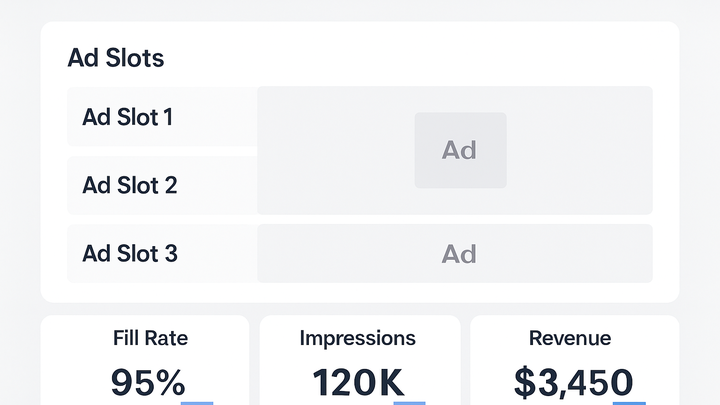Published on 2025-06-22T06:24:18Z
What is Ad Inventory? Examples of Ad Inventory
Ad inventory refers to the total amount of advertising space a publisher offers across digital properties such as websites, mobile apps, and connected TV. It encompasses all ad slots, formats, and placements available for sale, measured typically in impressions or ad units. Effective ad inventory management is crucial for maximizing revenue, maintaining user experience, and ensuring the right ads reach the right audience. With analytics tools, publishers can track fill rates, viewability, and engagement metrics for each inventory segment. Platforms like Google Analytics 4 (GA4) can capture custom events for ad impressions, while cookie-free solutions like PlainSignal offer lightweight tracking without compromising user privacy. By understanding and optimizing ad inventory, publishers can balance monetization goals with user satisfaction and advertiser demands.
Ad inventory
Ad inventory is the total amount of digital ad space publishers offer, tracked and managed for optimal revenue and performance.
Definition and Components of Ad Inventory
This section breaks down what ad inventory is and the building blocks that make it up. Understanding these components helps publishers organize and monetize their available ad space effectively.
-
Digital ad inventory defined
Ad inventory is the total set of ad placements a publisher makes available for sale across all digital channels, measured in potential impressions or ad units.
-
Key components
Ad inventory consists of various elements that determine its structure, availability, and value.
-
Ad units
The individual blocks or containers where an ad can be rendered, such as a banner or video slot.
-
Ad slots
Specific positions on a page or screen reserved for ads, often defined by size, format, and placement.
-
Ad formats
Different types of ads—display banners, interstitials, video, native—that affect engagement and pricing.
-
Targeting segments
Audience definitions (demographics, interests, behaviors) linked to inventory for more precise ad delivery.
-
Why Ad Inventory Matters in Analytics
Monitoring and analyzing ad inventory ensures publishers can maximize revenue, maintain user experience, and provide value to advertisers. Analytics insights guide strategic decisions around pricing, allocation, and optimization.
-
Revenue optimization
Tracking available vs. sold inventory helps identify high-value segments and adjust floor prices to boost yield.
-
Campaign performance tracking
Ensuring campaigns receive the correct number of impressions and measuring viewability and engagement across inventory.
-
User experience management
Balancing ad load prevents excessive ads that can degrade user satisfaction and hurt retention.
Measuring Ad Inventory with Analytics Tools
Both GA4 and PlainSignal can be configured to capture key ad inventory events. This section shows how to implement tracking for impressions and fill rates.
-
Using google analytics 4 (GA4)
In GA4, you can define custom events to capture ad impressions and viewability. Push an event like
ad_impressionwith parameters (slot, format, campaign) and analyze it in BigQuery exports or custom reports. -
Using PlainSignal for cookie-free tracking
PlainSignal offers a simple, privacy-focused snippet to capture page data and custom ad events without cookies.
-
Integration snippet
Embed the following PlainSignal snippet in your HTML to track ad inventory metrics:
<link rel="preconnect" href="//eu.plainsignal.com/" crossorigin /> <script defer data-do="yourwebsitedomain.com" data-id="0GQV1xmtzQQ" data-api="//eu.plainsignal.com" src="//cdn.plainsignal.com/plainsignal-min.js"></script> -
Custom event tracking
Use PlainSignal’s JavaScript API to send events like
ad_impressionorad_fillwith metadata for each ad slot.
-
Best Practices for Ad Inventory Management
Adopt these strategies to streamline inventory sales, improve yield, and maintain a healthy balance between ads and content.
-
Inventory forecasting
Use historical performance data to predict future availability and demand, helping set realistic sales targets.
-
Dynamic allocation
Leverage programmatic auctions to allocate unsold inventory in real time to the highest bidder.
-
Yield management
Implement price floors and tiered pricing to maximize revenue without compromising fill rates.
